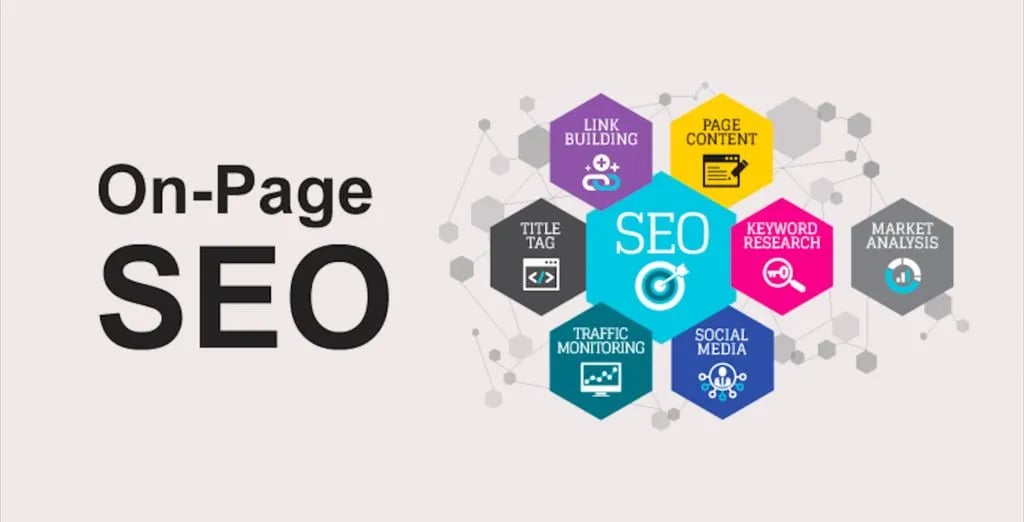
In the world of marketing and branding, every detail counts, and none more so than the colors used to represent a business. A well-designed website, logo, or advertisement can make all the difference in capturing the attention of potential customers and converting them into leads. But did you know that the psychology behind color choices can have a profound impact on how your brand is perceived? From evoking emotions to conveying values, colors play a crucial role in shaping your brand’s identity. In this article, we’ll examine into the world of color psychology and explore how context is key to harnessing its power to drive business success.
The Power of Color
Astounding as it may seem, colors have a profound impact on our emotions, perceptions, and behaviors. In marketing and branding, understanding the power of color is crucial for creating an effective visual identity that resonates with customers.
Emotional Connections
Analyzing the emotional responses triggered by different colors can help businesses craft a brand personality that aligns with their target audience’s values and preferences. For instance, the color blue is often associated with feelings of trust, loyalty, and serenity, which is why it’s a popular choice for financial institutions and healthcare brands. On the other hand, the color red can evoke emotions like excitement, energy, and passion, making it a suitable option for sports and entertainment brands.
Another crucial aspect of emotional connections is the role of color in creating a sense of familiarity and nostalgia. By incorporating colors that evoke positive memories or emotions, businesses can establish a deeper connection with their customers and foster brand loyalty.
Cultural Associations
To fully grasp the power of color, it’s crucial to consider the cultural associations attached to different hues. What may be perceived as a symbol of good luck in one culture might be seen as a sign of bad luck in another. For example, while white is often associated with purity and innocence in Western cultures, it’s a symbol of mourning in many Asian cultures.
Take, for instance, the color green, which is commonly linked with nature, growth, and harmony in Western societies. However, in Islamic cultures, green is a sacred color representing prosperity and good fortune. Understanding these cultural nuances is vital for businesses operating globally, as they can significantly impact the perception of their brand.
Associations between colors and cultural values can be complex and multifaceted. For instance, the color yellow is often associated with happiness and optimism in Western cultures, but it’s also a symbol of royalty and wealth in some African cultures. When designing a brand, it’s crucial to consider these cultural associations to avoid unintended connotations and ensure that the brand resonates with its target audience.
Contextualizing Color
Some of the most successful brands in the world understand the importance of color psychology in marketing and branding. They know that colors can evoke emotions, convey values, and even influence purchasing decisions. However, what many marketers and designers often overlook is the crucial role context plays in determining the effectiveness of color schemes.
A color that works wonders for one brand may fall flat for another. This is because colors are not universally appealing or effective; their impact depends on various factors, including industry, target audience, and cultural background. To create a truly effective color scheme, it’s important to consider these contextual factors and tailor your design brand accordingly.
Industry-Specific Color Schemes
To understand the importance of industry-specific color schemes, consider the vastly different connotations of the color green in finance and healthcare. In finance, green is often associated with money, growth, and stability, making it a popular choice for banks and investment firms. In healthcare, green is more closely tied to nature, calming emotions, and feelings of balance, making it a popular choice for medical brands.
In the ecommerce industry, where our automated system helps businesses set up their online shops, colors like blue and orange are commonly used to evoke feelings of trust and excitement. However, in the B2B sector, where our cold calling services help businesses connect with leads, more professional colors like navy blue and gray may be more effective.
Target Audience Preferences
Contextualizing color choices to your target audience’s preferences is crucial in creating a design brand that resonates with them. Different age groups, genders, and cultural backgrounds respond differently to various colors. For instance, while bright colors like pink and yellow may appeal to a younger demographic, they may be off-putting to an older audience.
When designing a website or creating a brand reputation, it’s important to consider the color preferences of your target audience. By doing so, you can create a visual identity that speaks directly to them, increasing the chances of conversion and customer loyalty.
For instance, if your business targets environmentally conscious customers, incorporating shades of green and blue into your design brand can help convey a sense of eco-friendliness and social responsibility. On the other hand, if your business targets young, urban professionals, bold colors like red and orange may be more effective in grabbing their attention and conveying energy and excitement.
The Psychology of Color

One of the most fascinating aspects of color psychology is its ability to evoke emotions and influence human behavior. Colors can stimulate feelings, convey messages, and even shape our perceptions of a brand.
Pertaining to marketing and branding, understanding the psychology of color is crucial in creating an effective visual identity that resonates with your target audience. By leveraging the right colors, businesses can create an emotional connection with their customers, build trust, and ultimately drive conversions.
Warm Colors: Energy and Emotion
Colorful and vibrant, warm colors like orange, red, and yellow are often associated with energy, passion, and excitement. These hues can evoke feelings of warmth, comfort, and stimulation, making them ideal for businesses that want to create a sense of urgency or excitement around their brand.
In the context of marketing and branding, warm colors can be used to draw attention, stimulate impulse purchases, and create a sense of FOMO (fear of missing out). For instance, a website design that incorporates warm colors can encourage visitors to take action, such as signing up for a newsletter or making a purchase.
Cool Colors: Calmness and Trust
For businesses that want to convey a sense of professionalism, trust, and calmness, cool colors like blue, green, and purple are often the way to go. These hues can evoke feelings of serenity, stability, and reliability, making them perfect for industries like finance, healthcare, and technology.
In the context of marketing and branding, cool colors can be used to build trust, establish credibility, and create a sense of stability. For example, a brand reputation management strategy that incorporates cool colors can help to convey a sense of authority and expertise.
Warm and cool colors can also be used in conjunction with each other to create a sense of balance and harmony. By combining warm and cool colors, businesses can create a visual identity that is both energetic and trustworthy, ultimately driving conversions and building a loyal customer base.
Branding with Color
Unlike other marketing strategies, color psychology in branding is not just about choosing a few colors that look nice together. It’s about creating a cohesive visual identity that resonates with your target audience and sets your business apart from the competition, colors can increase brand recognition by up to 80%. That’s a significant advantage in today’s crowded market.
Consistency is Key
One of the most critical aspects of branding with color is consistency. Your website, social media, and advertising should all feature a consistent color scheme to create a unified visual identity. This consistency helps to build trust and recognition with your customers, making them more likely to convert into leads. For example, if your website features a bold blue color scheme, your social media profiles and advertisements should also incorporate that same blue to create a seamless brand experience.
Inconsistent branding can lead to confusion and mistrust among customers. Imagine visiting a website with a bright red color scheme, only to see a completely different color scheme on their social media profiles. It’s jarring and can make it difficult for customers to connect with your brand. By maintaining a consistent color scheme across all platforms, you can create a strong brand identity that resonates with your target audience.
Differentiating through Color
Through the strategic use of color, businesses can differentiate themselves from their competitors and stand out in a crowded market. By choosing a unique color scheme that reflects your brand’s personality and values, you can create a visual identity that sets you apart from others in your industry. For example, a eco-friendly company might choose a calming green color scheme to convey a sense of nature and sustainability.
With a unique color scheme, you can also create an emotional connection with your customers. Colors can evoke emotions and convey messages, so choosing the right colors for your brand is crucial. By understanding the psychological impact of different colors, you can create a color scheme that resonates with your target audience and sets your business apart from the competition.
With a well-designed color scheme, you can create a strong brand identity that attracts customers and sets your business up for success. By incorporating your brand’s colors into every aspect of your marketing strategy, from your website to your social media profiles, you can create a cohesive visual identity that drives results.
Color in Marketing Strategies

Your marketing strategy is incomplete without considering the psychological impact of colors on your target audience. Colors play a crucial role in shaping customer perceptions, emotions, and ultimately, their purchasing decisions. The Psychology of Color in Marketing and Branding is a vital aspect of creating a successful brand identity.
Attention-Grabbing Colors
An imperative aspect of marketing is grabbing the attention of potential customers. Colors like red, orange, and yellow are often used to stimulate emotions and create a sense of urgency. These attention-grabbing colors can be used in call-to-actions, promotions, and limited-time offers to encourage customers to take action. For instance, a website design that incorporates bold, bright colors can increase the chances of converting visitors into leads.
In addition, attention-grabbing colors can be used to draw focus to specific elements on your website, such as buttons, banners, or special offers. By strategically using these colors, you can guide your customers’ attention to the most important aspects of your business, ultimately driving conversions and sales.
Mood-Inducing Colors
Colors have the power to evoke emotions and create a specific atmosphere. Mood-inducing colors like blue, green, and purple can be used to create a sense of calmness, trust, and luxury. These colors can be incorporated into your design brand to create an emotional connection with your customers.
For example, a business that offers eco-friendly products may use shades of green to convey a sense of nature and sustainability. Similarly, a luxury brand may use purple to evoke feelings of sophistication and elegance. By using mood-inducing colors, you can create a lasting impression on your customers and build a strong brand reputation.
Attention-grabbing colors and mood-inducing colors are not mutually exclusive. In fact, combining both types of colors can create a powerful marketing strategy. By using attention-grabbing colors to draw attention to specific elements and mood-inducing colors to create an emotional connection, you can create a website design that truly resonates with your target audience.
The Role of Color in Packaging
Many businesses underestimate the power of color in packaging, but it can be a game-changer in terms of attracting customers and standing out on store shelves.
Shelf Appeal
On the crowded shelves of a retail store, packaging is often the first point of contact between a customer and a product. This is where color plays a crucial role in grabbing attention and influencing purchasing decisions. Research shows that color can increase brand recognition by up to 80%, making it an imperative element in packaging design. By choosing the right colors, businesses can create an emotional connection with their target audience and differentiate themselves from competitors.
For instance, a bright and bold color like red can evoke feelings of energy and excitement, making it perfect for packaging sports drinks or energy bars. On the other hand, a calming color like blue can convey trust and reliability, making it suitable for packaging healthcare products or financial services.
Unboxing Experiences
The unboxing experience has become an imperative part of the customer journey, with many consumers sharing their experiences on social media. This is where color can play a significant role in creating a memorable and shareable moment. By incorporating colors that align with their brand identity, businesses can create a cohesive and engaging unboxing experience that leaves a lasting impression on customers.
The unboxing experience is not just about the physical act of opening a package; it’s about the emotional connection it creates with the customer. When done correctly, it can increase brand loyalty, encourage repeat business, and even drive word-of-mouth marketing.
Plus, with the rise of e-commerce, the unboxing experience has become a critical touchpoint in the customer journey. By incorporating colors that resonate with their target audience, businesses can create a memorable and shareable experience that sets them apart from competitors and drives customer engagement.
Final Words
Taking this into account, it’s clear that color psychology in marketing and branding is not a one-size-fits-all solution. What works for one business may not work for another, and it’s crucial to consider the unique context of your website, business, and customers when applying color psychology principles. By doing so, you can create a design brand that resonates with your target audience, drives conversions, and ultimately grows your business.
In today’s competitive market, it’s not enough to simply have a visually appealing website or brand identity. You need to understand the psychological triggers that drive your customers’ behavior and tailor your design accordingly. By harnessing the power of color psychology, you can turn leads into premium paying customers, build a loyal customer base, and establish a strong brand reputation. So, don’t just choose colors based on personal preference – use the science of color psychology to inform your design decisions and watch your business thrive.










